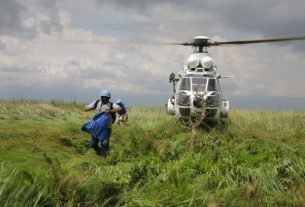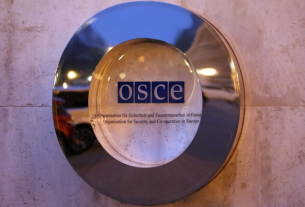[ad_1]
Beneath the world’s oceans, a silent revolution is underway. More than 1.48 million kilometres of underwater fibre-optic cables carry almost all global internet and telephone traffic. Now researchers are showing that these cables can do more than transmit data: they can listen to the planet.
By capturing tiny changes in how light travels through them, these cables can detect shifts in the movement, vibration and temperature of the seabed and water.
An EU-funded research initiative in the emerging field of fibre-optic seafloor sensing has been working on technology to turn the ocean floor into a vast, real-time observatory. The discoveries made should allow scientists to better monitor climate change, track tectonic activity and improve tsunami and earthquake warnings.
Underwater Earth-sensing network
Around 70% of the Earth’s surface is covered by water, yet most of it is inaccessible to conventional seismological instruments.
“We have excellent satellite coverage of the sea surface,” said Professor Marc-André Gutscher, marine geoscientist at the Geo-Ocean research centre in Brest, France. “But deep beneath, where most earthquakes and tsunamis originate, we have very few direct observations.”
“
Our main target was to see what happens before an earthquake.
That is beginning to change thanks to research into how undersea cables could be repurposed as a global sensing network.
Two complementary techniques dominate the field: Distributed Acoustic Sensing (DAS) and Brillouin Optical Time Domain Reflectometry (BOTDR).
Gutscher led a seven-year EU-funded research initiative called FOCUS that finished in September 2025.
It explored how these two techniques can detect tiny deformations – just one or two centimetres – along active deep-sea fault lines.
To test the concept, the team installed a 6-kilometre-long prototype cable across the seafloor along the North Alfeo Fault off Catania, Sicily. The area is prone to seismic activity as it lies close to Mount Etna, Europe’s largest and most active volcano.
Listening to the seabed
In 1908, a magnitude 7.1 earthquake struck the Straits of Messina between Sicily and mainland Italy, triggering a devastating tsunami that killed over 80 000 people in one of Europe’s deadliest natural disasters. The researchers’ aim is to better evaluate fault movements on the seafloor and help prepare coastal communities before similar events strike again in the future.
Gutscher’s team worked with the European Multidisciplinary Seafloor and water column Observatory (EMSO), a large-scale European research infrastructure that monitors the oceans and seafloor in real time from its base in Catania, Sicily.
The cable, designed together with IDIL, a French company specialised in fibre-optic systems, is similar to regular telecommunication cables, but includes special sensor fibres, more sensitive to mechanical disturbances on the seafloor.
Just 9 millimetres thick, it combines two types of optical fibre: loosely buffered fibres, similar to telecom cables, and tightly buffered fibres, more sensitive to strain (mechanical deformation). The researchers used BOTDR to measure subtle changes in fibre length corresponding to strain in the Earth’s crust.
“Our main target was to see what happens before an earthquake, to detect early deformation before sudden rupture,” said Dr Giovanni Barreca from the University of Catania.
For now, no significant movement has been observed, but that too is instructive. “It means the fault is currently locked and probably accumulating tectonic stress,” said Gutscher. “When that stress is released, we’ll be watching.”
The Sicilian cable has already proved its worth. In late 2020, it detected a massive submarine current, possibly triggered by an underwater landslide, a kind of “marine avalanche” that can travel hundreds of kilometres and sometimes trigger tsunamis.
Such events are rarely observed, but the fibre-optic data captured its signature in detail. This opens opportunities for monitoring and detecting secondary hazards that can threaten coastal communities and vital seafloor infrastructure.
From Sicily to the Caribbean
Meanwhile, the FOCUS team has also explored the potential of the underwater telecommunications cable network to improve environmental monitoring.
The researchers used local underwater cable networks off the Caribbean island of Guadeloupe to monitor changes in water temperature at the seafloor.
Initially, the team had to collect data manually every few months from land-based fibre-optic relay cabinets. Now, thanks to a permanent setup, they can monitor the cables remotely every three hours.
Their measurements record how light scatters inside the cables. When the cable is disturbed, tiny flaws in the fibre shift slightly, changing the light’s pattern. Scientists track these changes to understand what is happening on the seafloor.
“If anything disturbs the cable – if it tugs on it, shifts it, or heats or cools it – we can measure that,” Gutscher explained.
“
We are effectively turning the world’s digital nervous system into an environmental one.
While analysing how the light signal changes with temperature, they detected an increase of about 1.5°C in shallow waters over two years – consistent with measurements of the sea surface temperature performed by satellites. At the same time there was a massive coral bleaching event, with coral reef losses of about 30%.
In deeper waters off Guadeloupe, from 300 to 700 metres, the cables show smaller temperature increases of about 0.2 to 1°C.
These findings have just been accepted for publication (in Geophysical Research Letters) and imply that thousands of kilometres of telecommunication cables could be used to monitor deep ocean temperature changes, adding a new dimension to weather measurements.
“While our initial focus is tectonics, these measurements show how the same cables can track climate-related changes,” said Gutscher. “The potential for integrated environmental and hazard monitoring is enormous.”
This technique could also be expanded to other earthquake-prone regions such as Japan, Cascadia (along the Pacific coast of America) and elsewhere in the Mediterranean.
DAS systems can detect the initial seismic waves of an earthquake within seconds, while BOTDR can track long-term strain that builds over time. DAS offers the potential for immediate earthquake and tsunami alerts, while BOTDR can provide long-term monitoring of fault deformation, with potential application to earthquake forecasting.
“The novel secondary use of fibre-optic cables could represent a tremendous breakthrough in seismology and hazard warning,” said Gutscher. “We are effectively turning the world’s digital nervous system into an environmental one.”
With further collaboration and investment, the ocean floor – once almost invisible – could become one of science’s most powerful tools for protecting lives and understanding our changing planet.
Research in this article was funded by the European Research Council (ERC). The views of the interviewees don’t necessarily reflect those of the European Commission. If you liked this article, please consider sharing it on social media.
[ad_2]
Source link



